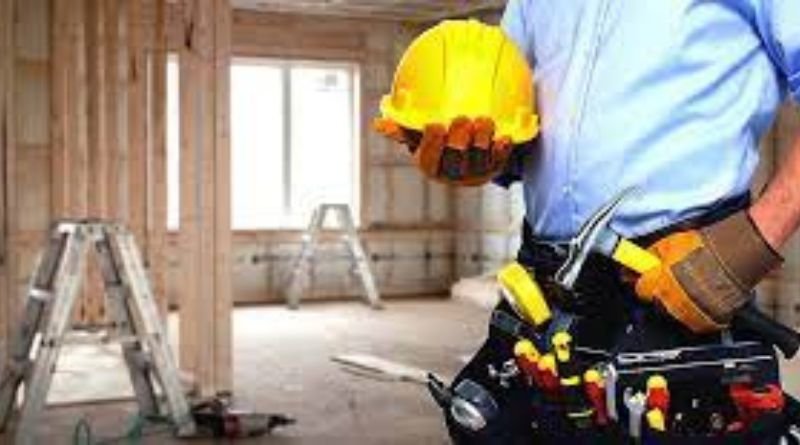In the realm of real estate and property management, maintenance stands as a cornerstone for ensuring the longevity, value, and functionality of properties. Whether residential, commercial, or industrial, regular and effective property maintenance is imperative to uphold safety standards, enhance aesthetics, and preserve investments. This article delves into the significance of property maintenance, its various facets, and strategies to optimize its effectiveness.
Understanding Property Maintenance
Property maintenance encompasses a broad spectrum of tasks aimed at preserving and improving the condition of physical assets. It involves proactive measures to prevent deterioration, as well as responsive actions to address existing issues. From routine inspections to repairs and renovations, property maintenance activities span across different areas such as structural integrity, plumbing, electrical systems, landscaping, and aesthetics.
Importance of Regular Maintenance
Regular maintenance is akin to preventive healthcare for properties. By identifying and addressing issues in their nascent stages, property owners can mitigate risks of major breakdowns or damages, thereby saving substantial costs in the long run. Moreover, well-maintained properties command higher resale and rental values, attracting discerning tenants and buyers who prioritize quality and reliability.
Key Components of Property Maintenance
1. Structural Integrity
Preserving the structural integrity of buildings is paramount to ensure safety and longevity. Regular inspections for signs of structural weaknesses, such as cracks, dampness, or uneven settling, are crucial. Timely repairs and reinforcements can prevent catastrophic failures and prolong the lifespan of the property.
2. Mechanical and Electrical Systems
Efficient functioning of mechanical and electrical systems is vital for occupant comfort and safety. Scheduled maintenance of HVAC (Heating, Ventilation, and Air Conditioning), plumbing, and electrical systems can prevent disruptions and optimize energy efficiency. Moreover, adherence to regulatory standards and codes is imperative to mitigate risks of accidents or violations.
3. Exterior Maintenance
Curb appeal plays a significant role in shaping the perception of a property. Exterior maintenance tasks include landscaping, cleaning, painting, and repairing external surfaces. Well-maintained exteriors not only enhance aesthetics but also protect the property from weather-induced damage and deterioration.
4. Interior Upkeep
Interior maintenance encompasses a range of tasks aimed at preserving functionality and aesthetics within buildings. This includes routine cleaning, inspection of fixtures and appliances, as well as repairs or upgrades to flooring, walls, and fixtures. Proper interior maintenance contributes to occupant satisfaction and fosters a conducive living or working environment.
Strategies for Effective Property Maintenance
1. Develop a Comprehensive Maintenance Plan
A structured maintenance plan outlines scheduled inspections, tasks, and timelines for different aspects of property upkeep. It helps property owners stay organized, prioritize tasks, and allocate resources efficiently. Tailoring the plan to the specific needs and characteristics of the property ensures comprehensive coverage and optimal outcomes.
2. Invest in Proactive Inspections
Regular inspections serve as the foundation for proactive maintenance. Engaging qualified professionals to conduct thorough inspections enables early detection of potential issues and allows for timely interventions. Property owners should prioritize proactive measures to prevent problems before they escalate, thereby minimizing disruptions and costs.
3. Prioritize Safety and Compliance
Compliance with safety regulations and building codes is non-negotiable in property maintenance. Property owners must stay abreast of relevant regulations and ensure adherence through routine inspections and necessary upgrades. Prioritizing safety not only protects occupants and assets but also mitigates legal and financial liabilities.
4. Embrace Technology and Innovation
Technological advancements offer innovative solutions to streamline property maintenance processes. From predictive maintenance tools to smart sensors and automation systems, leveraging technology enhances efficiency, accuracy, and cost-effectiveness. Integrating technology into maintenance practices empowers property owners to make informed decisions and optimize resource allocation.
Conclusion
In conclusion, property maintenance is a fundamental aspect of property ownership and management, influencing its value, longevity, and functionality. By implementing proactive maintenance strategies, property owners can safeguard their investments, enhance tenant satisfaction, and uphold regulatory compliance. Embracing a holistic approach to maintenance, encompassing structural, mechanical, exterior, and interior aspects, ensures comprehensive upkeep and optimal outcomes in the ever-evolving real estate landscape.
Read also: check



